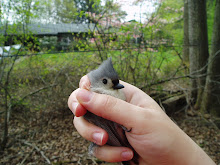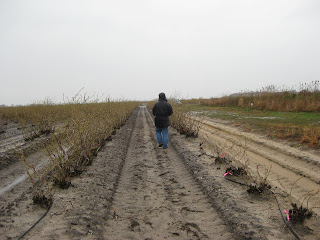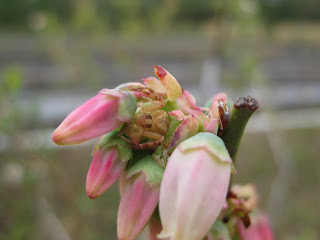A while back, I talked about
my interest in making my own yogurt.
Tonight, I'm going to try a new experiment: I'm going to make my own cheese.
As before, you may have your doubts, reminding me that caves are often an integral part of the cheese industry and that I live in an apartment (and not a very cave-like one, at that).
But
Mr. Bittman says it can be done at home, and quite easily. And, I have an important ingredient: motivation. When I lived in Manhattan, I had the world's best sheep milk ricotta available whenever I wanted it from the Fairway cheese counter. I remember the first time I tried it; I had asked the cheesemonger on duty where I might find the ricotta, and he said to me, "Well, that Polly-O stuff and all the others are around that corner, but... try this." He produced a spoonful of the creamiest, lightest, most delicious ricotta I had ever tasted. (They kept it behind the cheese counter, available only by request.) I made a fine baked pasta that night, and every bite was a song of praise to the sheep that had produced the milk. That ricotta tasted of excellent milk, open green pastures and fresh air. Polly-O and all the others, after that, only tasted like processed, fake food.
Sadly, I do not currently have a source for this miraculous ricotta. When the farmer's market season fires up again I will be able to get some, but I have a tomato-blue cheese tart planned for Thursday and I need some good ricotta today.
Which is why I am going to make my own
cheese.
The basic principle of cheese-making is this: if you start with milk and add something that acidifies it, the proteins will stick together in clumps (curds) and separate from the liquid (whey). Strain the whey from the curds, press them together, add salt and other flavors. Age as you see fit. A simple process in principle, but with lots of room for improvisation.
When you acidify the milk with an acid, you get something like feta or cottage cheese. However, most cheeses are made at least in part with the help of our friends, the bacteria. Bacteria break down the sugar in milk (lactose) and turn it into organic acid (lactic acid). This acid then causes the reaction I described above. You already know this if you have encountered milk that is very far beyond its expiration date; it smells sour and gets a bit clumpy at the bottom.
The recipe Mr. Bittman gives calls for buttermilk, which is made by innoculating milk with a bacterial culture, similar to a very thin yogurt. (Historically, buttermilk is what remained after skimming the milk to make butter, but that is rarely available in your average supermarket today.) The milk is simmered for a few minutes, the buttermilk is added all at once, and, with a little luck, everything will curdle nicely. The whole mixture is put through a cheesecloth, salted, and drained.
I will let you know how it goes tonight in my
laboratory kitchen. I'm using cow milk, since sheep milk is not available at Stop n Shop. In the meantime, check out the Wikipedia page on
cheese. Interesting things to know:
- The history of cheese predates recorded history.
- Acid-set cheeses (as opposed to rennet-set) will not melt; they have a different kind of protein matrix holding them together and only get firmer as they cook. (Paneer is a good example.)
- The US is the world's biggest producer of cheese, but France is the biggest exporter. But the true title of cheese-eating champions goes to Greece, which eats more cheese per capita than any other country. (However, three quarters of it is feta cheese.) France is a close second.
There are a lot of things I didn't talk about here that relate to cheese making, including rennet and fungus. While I would like to discuss them in the future, I won't be using either in my cheese-making attempts tonight, so I will have to leave them for another time.
PS: A little late, but... Happy New Year!
 This is my best Habropoda laboriosa photo to date, you can actually see her face in this one, yay! Also take a look at all the pollen on her legs! I wish her hundreds of fat children.
This is my best Habropoda laboriosa photo to date, you can actually see her face in this one, yay! Also take a look at all the pollen on her legs! I wish her hundreds of fat children.




















